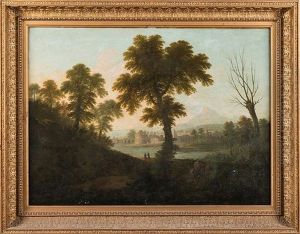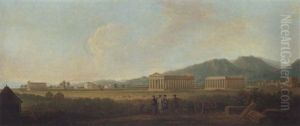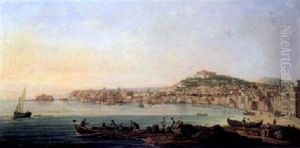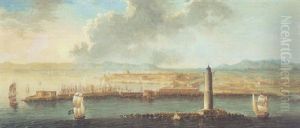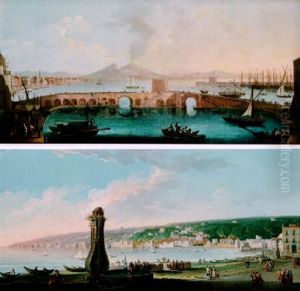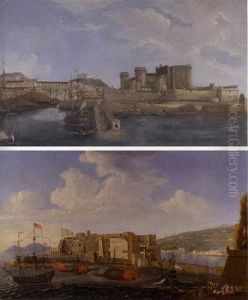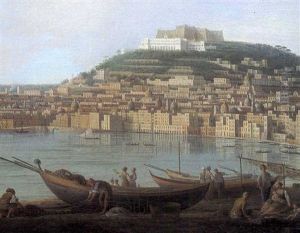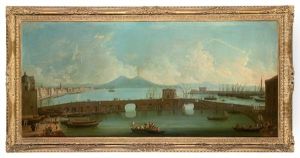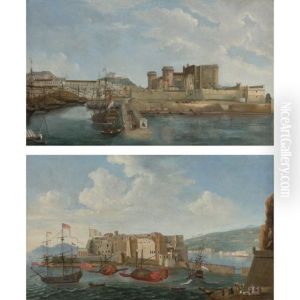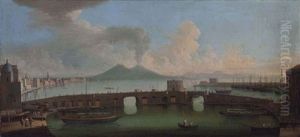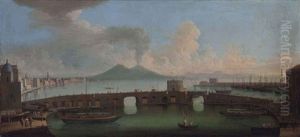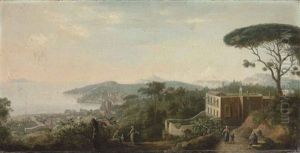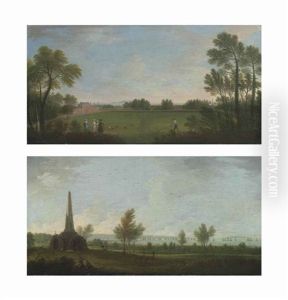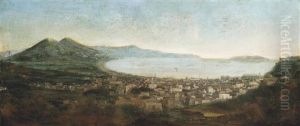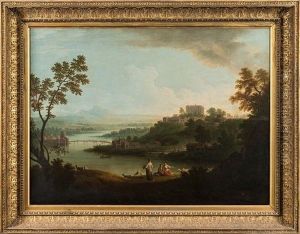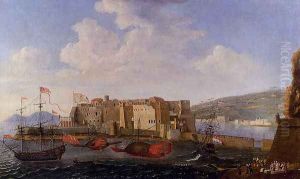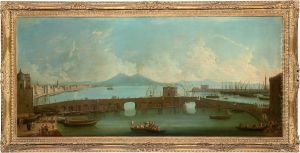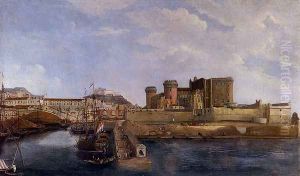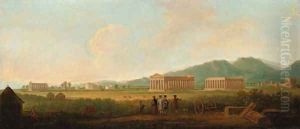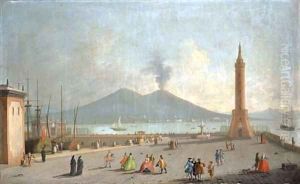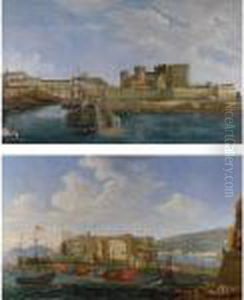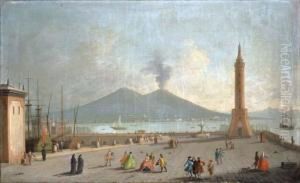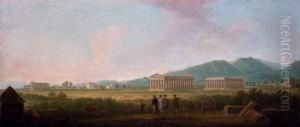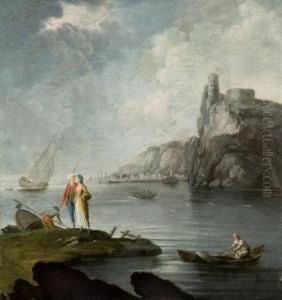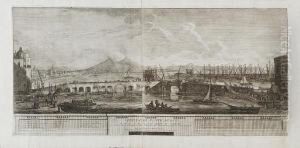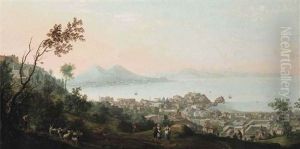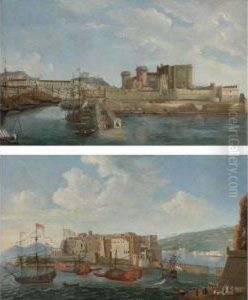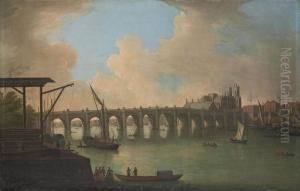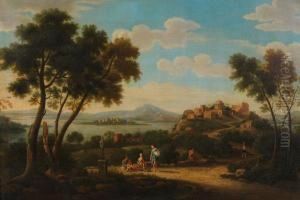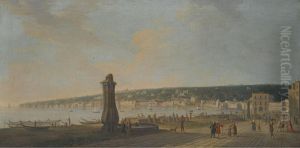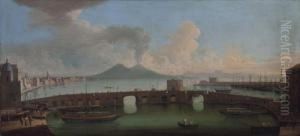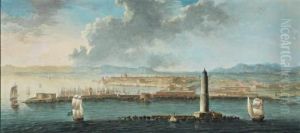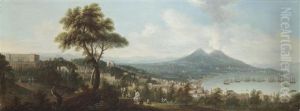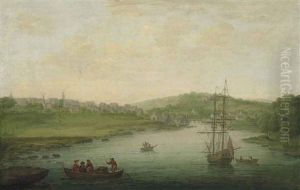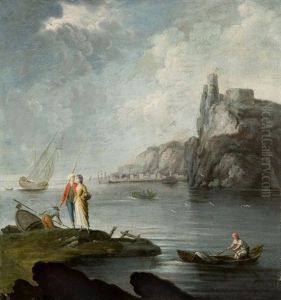Gabriele Ricciardelli Paintings
Gabriele Ricciardelli was an Italian painter known for his landscape and veduta paintings that vividly depicted both real and idealized settings. Born in Naples in 1724, Ricciardelli emerged from a cultural environment rich with artistic ferment during the 18th century, a period when the city was a bustling hub of creativity and innovation in the arts.
His work is particularly notable for its detailed and atmospheric portrayal of landscapes, often capturing the unique light and ambiance of the Italian countryside and urban settings. Ricciardelli's paintings often included architectural elements and ruins, reflecting a growing interest in antiquity and archaeology that was prevalent among intellectuals and artists of his time. This interest was partly spurred by the contemporary excavations of Herculaneum (1738) and Pompeii (1748), which had a profound impact on the arts in Naples and beyond.
Despite the popularity of his themes, detailed records of Ricciardelli's life are somewhat scarce, and much of what is known about him comes from the legacy of his work. He is believed to have been active primarily in Naples, though his paintings found audiences across Europe, reflecting the widespread appeal of Italian landscapes and vedute to an international clientele.
Ricciardelli's contributions to the veduta genre, a form of detailed, usually large-scale paintings of cityscapes or vistas, were significant. He was contemporary with other noted vedutisti, such as Giovanni Paolo Panini and Canaletto, though Ricciardelli's focus remained closely tied to his native southern Italian landscapes. His works are characterized by their meticulous detail, vibrant atmosphere, and the subtle interplay of light and shadow, which together offer a romantic, yet realistic portrayal of 18th-century Italy.
Gabriele Ricciardelli's death is believed to have occurred around 1780, marking the end of a career that had contributed significantly to the veduta tradition and the broader landscape genre. Today, his paintings are held in various collections worldwide, serving as a testament to his skill and the enduring appeal of his artistic vision.
